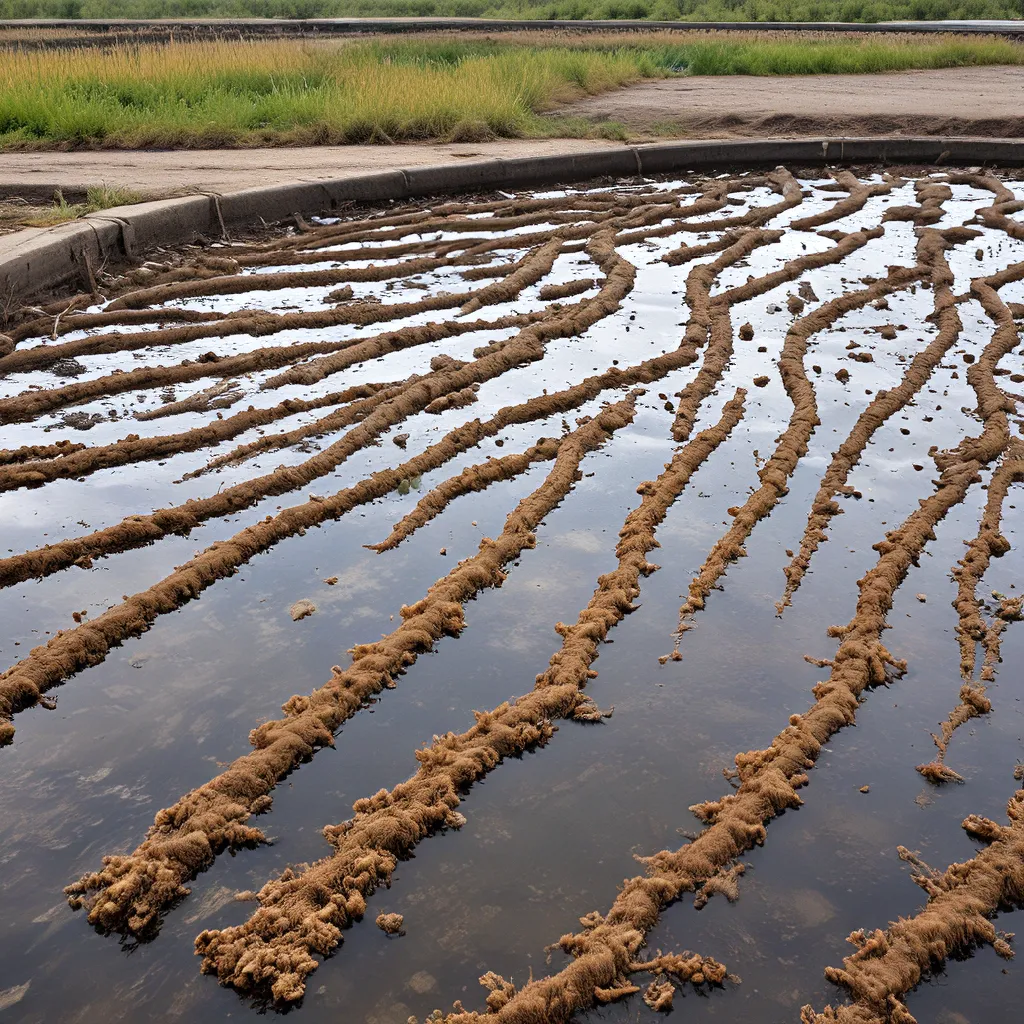
Wastewater treatment is a critical process in preserving the health of our environment, and I’ve always been fascinated by the technological advancements in this field. Recently, I’ve learned about the exciting developments in phytotechnology – the use of plants to treat and remediate contaminated water. As someone passionate about sustainability, I’m eager to dive into this topic and share my insights with you.
Harnessing the Power of Nature’s Filters
Picture this: a lush, verdant constructed wetland teeming with vibrant vegetation, silently purifying wastewater through a complex interplay of biological, physical, and chemical processes. This is the essence of phytotechnology, a nature-based approach that harnesses the incredible capabilities of plants to remove pollutants from water.
What’s so special about plants, you ask? Well, these unassuming organisms are true marvels of evolution, with the ability to absorb, transform, and even break down a wide range of contaminants. From heavy metals to organic compounds, plants can act as natural filters, cleaning the water as it flows through their roots, stems, and leaves.
The Magic of Rhizofiltration
One of the key mechanisms behind phytotechnology is rhizofiltration, where the plant roots play a crucial role. As wastewater passes through the root zone, the plants’ extensive network of roots acts like a fine-tuned filtration system, trapping and accumulating pollutants. This process is particularly effective in removing heavy metals, which can be sequestered and stored within the plant tissues, effectively preventing their release back into the environment.
But the magic doesn’t stop there. Plants also possess the ability to transform certain pollutants through a process called phytodegradation. By harnessing the power of their own metabolic pathways, plants can break down complex organic compounds, converting them into less toxic or even harmless substances. Imagine a living, breathing water purifier, constantly working to cleanse the environment!
Exploring Phytotechnology Applications
The applications of phytotechnology in wastewater treatment are truly diverse and far-reaching. From constructed wetlands to phytoremediation systems, these nature-inspired solutions are being implemented in a wide range of settings, each with its own unique challenges and benefits.
Constructed Wetlands: Nature’s Water Purifiers
Constructed wetlands are perhaps the most well-known application of phytotechnology. These engineered ecosystems, designed to mimic the functions of natural wetlands, have proven to be highly effective in treating a variety of wastewater streams, including municipal, industrial, and agricultural effluents.
The beauty of constructed wetlands lies in their simplicity and low-maintenance requirements. By strategically selecting and planting appropriate vegetation, these systems can efficiently remove nutrients, organic matter, and even pathogenic microorganisms from the water. Moreover, they provide valuable habitat for a diverse array of wildlife, contributing to the overall biodiversity of the surrounding ecosystem.
Phytoremediation: Harnessing Plant Power
Beyond constructed wetlands, phytotechnology also includes the practice of phytoremediation, where specific plants are used to remove, degrade, or stabilize contaminants in soil, sediment, and water. This approach is particularly useful in addressing legacy pollution and brownfield sites, where historical industrial activities have left behind a legacy of environmental damage.
One of the standout examples of phytoremediation is the use of willow trees to treat landfill leachate. These fast-growing, water-loving plants have a remarkable ability to absorb and metabolize a wide range of organic compounds, effectively reducing the pollutant load before the leachate is discharged into the environment.
Advancing Phytotechnology: Overcoming Challenges
As with any innovative technology, phytotechnology faces its fair share of challenges. But with the dedication and ingenuity of researchers and practitioners, these obstacles are being overcome, paving the way for even greater advancements.
Improving Efficiency and Scalability
One of the key challenges in phytotechnology is optimizing the efficiency and scalability of these systems. While the natural purification capabilities of plants are impressive, there is a constant drive to enhance their performance and make them more suitable for large-scale applications.
Researchers are exploring innovative approaches, such as genetic engineering to boost the plants’ remediation capabilities, or integrating phytotechnology with other treatment technologies to create hybrid systems. By leveraging the strengths of both natural and engineered solutions, we can unlock the full potential of phytotechnology and make it a more viable option for wastewater treatment.
Addressing Contaminant Diversity
Another challenge lies in the diverse nature of contaminants found in wastewater streams. From heavy metals to persistent organic pollutants, each type of pollutant requires a tailored approach. Selecting the right plant species and optimizing the phytotechnology system for specific contaminants is crucial for achieving effective and targeted remediation.
Ongoing research is exploring the use of plant consortia, where multiple plant species are strategically combined to address a wider range of contaminants. By creating these synergistic plant communities, researchers aim to enhance the overall remediation capacity and broaden the applicability of phytotechnology.
The Future of Phytotechnology: A Promising Outlook
As I delve deeper into the world of phytotechnology, I’m filled with a sense of optimism and excitement about its potential to revolutionize wastewater treatment. The integration of nature-based solutions with technological advancements holds the promise of a more sustainable, eco-friendly, and cost-effective approach to water purification.
Embracing a Greener Future
The future of phytotechnology is bright, and I believe it will play a crucial role in achieving a more sustainable and circular economy. By harnessing the power of plants to treat wastewater, we can not only reduce our environmental footprint but also unlock new opportunities for resource recovery and water reuse.
As researchers continue to push the boundaries of this field, I’m confident that we’ll witness even more remarkable innovations and breakthroughs. From optimizing plant selection to enhancing system designs, the possibilities are endless, and the potential to create a greener, more resilient future is within our reach.
So, let’s embrace the promise of phytotechnology and explore how we can harness the incredible capabilities of nature to transform the way we manage our precious water resources. Who knows, the next breakthrough might just come from your own backyard!